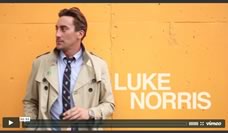The Independent News Article –
Sell while you can. That is the stark warning from a senior museum figure to anyone who has bought an artwork by Damien Hirst, the self-styled enfant terrible of British art.
Writing in the Opinion pages of today’s Independent, Julian Spalding, who has headed some of Britain’s foremost public galleries, predicts the bubble will soon burst for Hirst and fellow exponents of what he calls “con art” – a play on the term “conceptual art”, the so-called art of ideas. He likens this bubble in the art world to the sub-prime mortgage crisis. It will crash, he says, when collectors realise how “seriously worthless” conceptual art is.
Spalding’s attack comes as Tate Modern prepares to unveil “the first substantial survey” of Hirst’s work in the UK, opening next week. The gallery praises Hirst for creating “iconic work”. But Spalding said: “The emperor has nothing on. When the penny drops that these are not art, it’s all going to collapse. Hirst should not be in the Tate. He’s not an artist. What separates Michelangelo from Hirst is that Michelangelo was an artist and Hirst isn’t.”
Ridiculing Hirst’s pickled shark as lacking true artistry, he said: “To take one example, [the shark] is not only not worth the $12m… paid for it, it isn’t worth a cent, not because it isn’t great art, good art or even bad art, but because it isn’t art at all.”
Spalding was director of the Sheffield, Manchester and Glasgow galleries, with world class collections. He promoted Beryl Cook andL S Lowry, artists loved by the public but loathed by the avant-garde.
His condemnation of conceptual art is fully explored in a new book Con Art – Why You Ought To Sell Your Damien Hirsts While You Can, published on April 1. Likening himself to the boy who pointed to the Emperor’s clothes, Spalding warns: “All genuine creative effort has been knocked into the shadows…The con lies in…calling something art that isn’t art.”
Hirst is one of Britain’s richest men, through marketing his “brand”, Spalding says. In 2008, he auctioned works for £111m, a world record. He has faced accusations of plagiarism and unproven rumours that he inflates prices by buying his own works – but Spalding’s devastating attack goes further by saying that it is not art at all.
The cover of Spalding’s book features Dolly the sheep, a play on Hirst’s pickled sheep and, perhaps, on collectors collecting like sheep.
He also takes aim at Tracey Emin, noting that putting an unmade bed in an art gallery does not “make it a work of art”. He said: “The Mona Lisa is the Mona Lisa wherever it is, hung in an airport foyer or… even lying in a gutter.”
Both the Tate and Science, Hirst’s company, declined to comment.
Timeline: How the Damien Hirst phenomenon unfolded
1992
The Physical Impossibility of Death in the Mind of Someone Living, commissioned by Charles Saatchi for £50,000, comprising a shark pickled in formaldehyde, goes on display. Sells in 2005 for £6-7m.
1996
The spot painting Adrenochrome Semicarbazone Sulfonate, 1992, sells for £32,200 at Christie’s, as part of the artist’s first successful sale at auction.
1998
Christie’s sets a world record price for Damien Hirst at auction by selling his medicine cabinet, God, for £188,500.
2000
Hymn, a huge sculptural rendering of a human anatomical model created in 1996, is purchased by Charles Saatchi for £1m.
2006
Sculpture Away from the Flock sells for £1.8m, beating his previous record of £1.2m. Massimo Lauro, the Italian shipping magnate, bought the work in 1996 for a reported £40,000.
2007
Hirst set the record at Sotheby’s – £9.65m for Lullaby Spring, a medicine cabinet – for a work by a living artist. For the Love of God, a skull encrusted with 8,601 diamonds, is sold for £50m.
2008
Hirst becomes first artist to sell a complete body of work, Beautiful Inside My Head Forever. The 223 items reach a £111m, including £10.3m for The Golden Calf, in formaldehyde.
2011
Total sales for Hirst works fall from £170m in 2008 to £12m in 2009. Hirst said he was optimistic prices would recover and by 2011 another of his 1,400 spot paintings sells for £1.8m.







